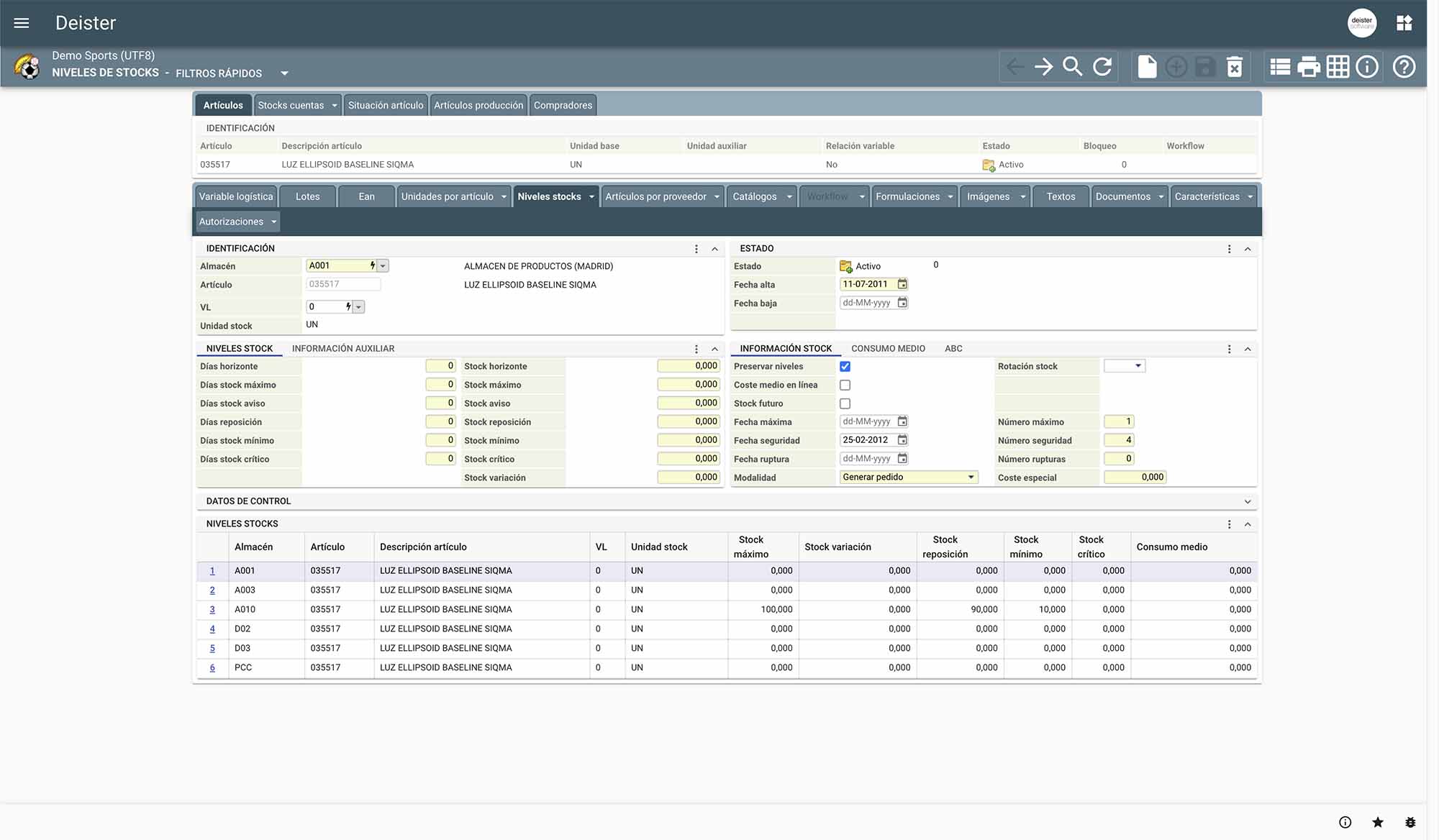Supply Chain Planning (SCP)
Supply Chain Planning (SCP)
Axional ERP/SCP provides seamless planning for the requirements and management of the restocking process, adapted to the needs of your company.
It ensures increased service levels, inventory optimized to the scope of your needs, and reduction in the number of orders made to suppliers. The system possesses needs analysis algorithms that take the actual demand for each product into consideration, as well as past information, optimal purchase batches, the average time to delivery and the maximum time permitted, and a set of parameters to optimize stock levels, ensuring service.
Whether items are acquired for sale or consumption, whether the materials are intended for manufacturing processes or processing, Axional ERP/SCP‘s planning tools will allow you to operate in any scenario, even mixed environments where different supplying methods are combined, depending on the warehouse or type of item.
The planner contains a global overview of the entire supply chain, from current orders to material inventory, conversion operations, and current and anticipated demand. This allows you to make timely and appropriate decisions about supply status and respond immediately to unexpected changes in demand, minimizing inventory excess. This vision also includes the relationships among a company’s various warehouses, granting a comprehensive view of stock levels and needs. The application of Requirements Planning Algorithms concedes the following benefits:
- Reduction of stock levels.
- Minimization of possible stock shortages and increased service level.
- Purchasing decrease.
- Optimization of physical space and reduction of logistics costs.
- Decrease in number of product deliveries to warehouse.
- Planning and forecasting changes in demand to anticipate any unforeseen issues.
- Adapting inventory to expected demand according to trends and past cycles.
Planning methods
For each product, one of the following planning methods may be selected:
Axional ERP/SCP includes restocking calculation according to stock levels, which incorporates multiple coverage levels: critical stock, minimum stock, stock replacement, stock warning or maximum stock.
Stock levels can be defined in units or in days of coverage, making the planning process a mixed system to calculate reorder points and keeping configuration simple.
The use of different levels allows you to configure different actions when the corresponding stock level is reached: activate warning, activate restocking, or activate urgent release of purchase orders.
The method used to calculate needs per reorder point allows the system to automatically calculate optimal stock, analyzing the demand forecast, the forecast of incoming and outgoing materials, and existing stock.
To calculate demand, different predefined algorithms can be used and even adapted to a specific industry. In the different methods used to calculate the reorder point, several variables are considered: restocking cycle, days of stock, trends and time period. There are also special methods to consider other factors such as:
- Flattened consumption due to promotions or offers.
- Maximum sales on consecutive days as a basis for calculating demand.
- Impact of public holidays in time calculations, and whether to include or disregard them.
- Security outlook for each individual product, which helps reduce overall stock and detect the risk of breakage.
In addition to the mechanisms used to calculate product needs, the calculation system based on MRP II receives restocking proposals from each production center along with manufacturing requirements for semi-finished products. These needs are obtained from manufacturing orders or from the needs of manufactured products generated in the Master Production Plan (MPP) simulation environment. By analyzing the structures of materials and the timing of when components will be needed, a restocking proposal is established based on recursive needs calculation, optimizing the number of purchase orders, purchase batches, and reuse of existing materials in other warehouses.
This process also allows companies to anticipate the right moment to launch a purchase or production order, aiming to have the material available at the right time, taking supplier delivery times and required manufacturing time into consideration.
Therefore, any change in the master production plan (MPP) in the launching of new production orders, or update to requested completion dates, implies a change in the MRP result.
Empower your business today
Our team is ready to offer you the best services





